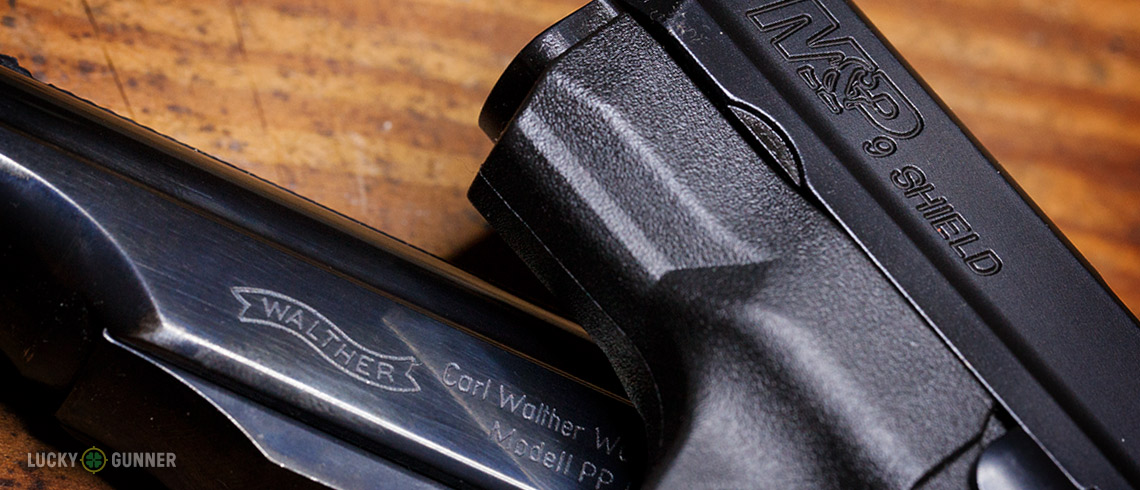A few weeks ago, we held a poll here at Lucky Gunner Lounge to find out what kind of content you guys were most interested in seeing. Of the four options given, “Concealed Firearms” won by a landslide, and we promised to bring you lots of content relevant to that subject this Spring.
Whether or not it looks like it outside your window, Spring is here, and today’s post marks the official launch of our series on concealed weapons. We’re starting off with a retrospective on the history of handguns used for concealed carry in the U.S.
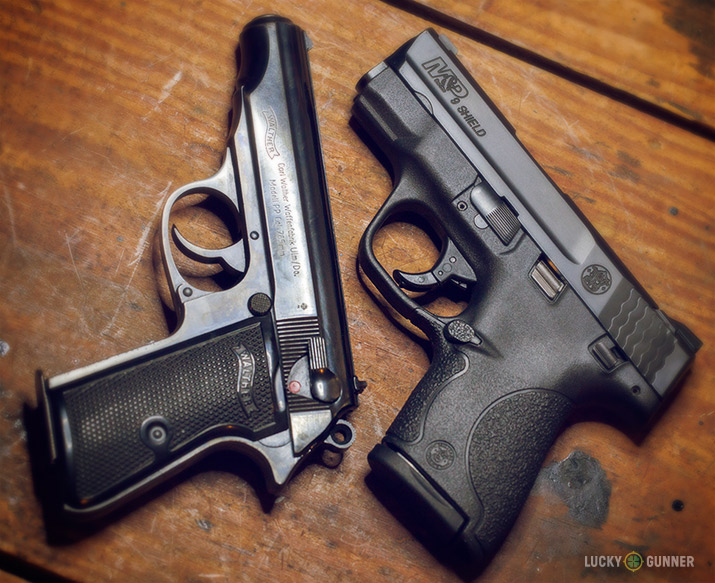
The following is a list of what I believe are five of the most important concealed carry guns of the modern era (which, for our purposes today, I consider to have started in the 1890s with the wide adoption of smokeless powder). These are the guns that either marked the beginning of major technological developments or became influential in the carry habits of Americans.
1. Colt Detective Special

Introduced: 1927
Caliber: .38 Special
Capacity: 6
Colt didn’t invent the concept of the snub nose revolver, but they popularized it with the Detective Special. Since the invention of the revolver, anyone wishing to make their wheel gun more concealable could always take a saw to the barrel and hack off a few inches, and there are numerous documented examples of such modifications. Miniature “pocket” sized revolvers were also available in the single action era, but Colt was the first company to successfully manufacture and market the concept for a double action revolver, essentially legitimizing the snub nose as a tool of the good guys, rather than a means of sneaking a weapon where it wasn’t supposed to go.
Even with decades of evolution of the snub nose concept, Colt’s Detective Special remains one of the few designs with a six-shot cylinder. They’ve been out of production for many years now, but used copies are still popular today.
2. Smith & Wesson Centennial

Introduced: 1952
Original Caliber: .38 Special (later offered in 9mm, .357 Magnum, .22 LR, 22 WMR, .32 H&R Magnum)
Capacity: 5 (.38 Special)
After Colt took the snub nose concept mainstream, Smith & Wesson released the Centennial revolver, which included two major innovations that have kept S&W snubbys dominant in that category until the present day. The first was the omission of the hammer, creating a snag-free double-action only design. The second big change was the move from a steel frame to a lightweight alloy frame. These changes proved that a snub nose could be more than just a shrunk-down version of a full size revolver. With features that made the Centennial well suited for concealment and comfortable carry, S&W cemented the J-frame revolver as the kind of gun that could go with you anywhere.
3. FN Model 1910
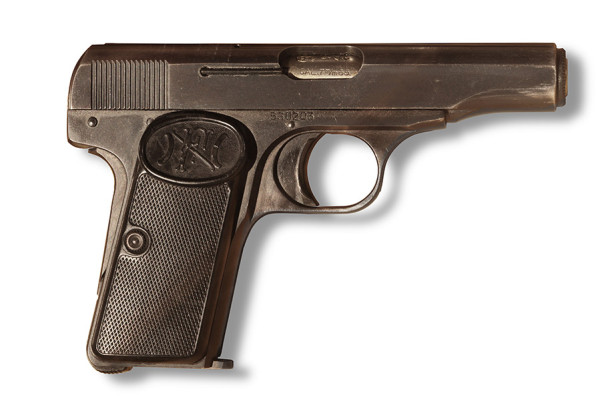
Introduced: 1910
Caliber: .32 ACP/.380 ACP
Capacity: 7+1(.32 ACP), 6+1 (.380 ACP)
Now is the point in the list where you say “I’ve never even heard of this gun and this author is a moron.” I won’t try to dispute the latter claim, but let me explain why this gun made my list. The FN Model 1910 is a John M. Browning design that’s not as well known by modern shooters as some of his others. When Colt wasn’t interested in the pistol, Browning took it to FN in Belgium who produced it until 1983. The pistol was popular in Europe but didn’t see nearly as many sales in the States.
But as awesome as Browning is, the fact that the FN Model 1910 is one of his designs isn’t enough to make this list. What is special about this pistol is that it was the first semi-auto pistol design that placed the recoil spring around the barrel, rather than below it. This design was later copied by almost every other fixed-barrel blowback pistol design for the next several decades including the Walther PP series, Makarov PM, Beretta Cheetah, CZ-82/83, and Sig P230/232, just to name a few. Today’s small-caliber centerfire pistols have trended toward micro-polymer designs, but these larger, yet still compact blowback designs dominated the small semi-auto market for the better part of the 20th century, and they all have roots in the original Browning-designed FN Model 1910.
4. Glock 26
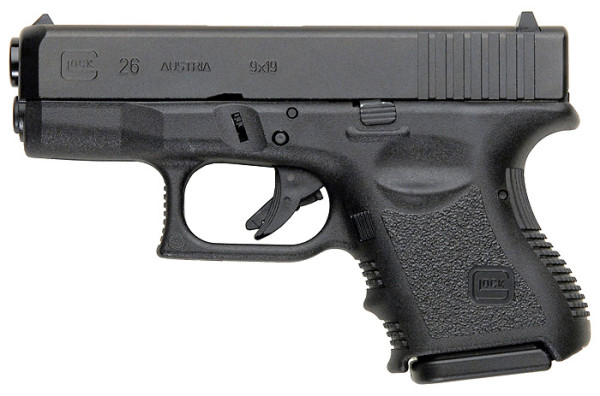
Introduced: 1995
Caliber: 9mm
Capacity: 10+1
The 9mm Glock 26 (and Glock 27 in .40 S&W) was not, in itself, an especially innovative design. It’s little more than a down-sized version of their original Glock 17 9mm. Before the Glock 26, it was not uncommon for manufacturers to make “compact” versions of their full size pistols, but it was rare that they were actually lightweight and easy to conceal for the average Joe with a carry permit. The so-called “baby Glock” hit the market at just the right time. With a 10-round capacity, it wasn’t affected by the standard-magazine capacity ban of 1994-2004, and it came during a period when dozens of states were passing their first concealed carry permit laws. Glock had primarily targeted law enforcement with their previous designs, but sensing an opportunity, they went right for the civilian concealed carry market with the Glock 26. It proved to be a huge success both with the target market and with cops looking for a backup pistol to compliment their Glock duty weapons.
Other gun companies in the 90s were still struggling to come up with ways to compete with Glock’s innovative designs and low production costs, but Glock was already two steps ahead of them with a carry gun that quickly gained a reputation for reliability to rival their full size line. Other small semi-autos on the market were either much heavier, fired weaker cartridges, or were stuck with lower-capacity single stack magazines. The popularity of the Glock 26 pushed other companies even harder in their efforts to go smaller and lighter with their designs.
Its popularity may have slightly waned in recent years in favor of thin single-stack 9mm and .40 S&W carry pistols, but the Glock 26 remains the prime example of a “serious” carry gun that many consider to be the perfect combination of firepower, concealability, and shootability.
5. Kel-Tec P-32
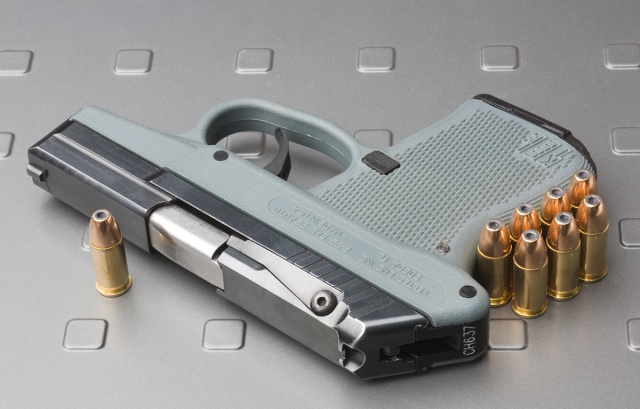
Introduced: 1999
Caliber: .32 ACP
Capacity: 6+1
Even if you kept reading after the FN Model 1910, then the inclusion of a Kel-Tec on this list has probably got you itching to hit the comments with some choice words about my intelligence. But just think about it for a minute — like the Model 1910, the importance of the P-32 is in what came after. The popularity of the P-32 led Kel-Tec to develop the P-3AT, which was the first of the itty-bitty polymer .380 pistols. Before these two came out, most of the true “pocket” pistols were chambered in .22 LR or .25 ACP. Ruger took notice of the rapid rise in popularity of the P-3AT, leading to the introduction of the LCP. It’s been debated whether the LCP was a direct copy of the P-3AT, but what’s clear is that Ruger used their superior manufacturing and marketing capacity to cash in on a market that Kel-Tec found with the P-3AT and P-32.
Since 2008, Ruger has sold hundreds of thousands of those little pistols, which coincides with the recent boom in popularity of concealed carry permits. Owning a CCW permit can no longer be considered a fringe activity relegated to gun nuts and the paranoid; it’s mainstream, and no gun embodies the popularity of the modern carry movement like the LCP. Other companies have followed the trend with similar designs like the S&W Bodyguard .380, Kahr P380, Taurus 738 TCP, and Beretta Pico. When .380 ACP turned out to be not enough for some folks, the gun companies shifted their efforts to making small single-stack 9mm pistols that were just a hair larger like the Kahr PM9, Kel-Tec PF9, Ruger LC9, S&W Shield, Sig P290, Beretta Nano, and Taurus PT709 Slim. I’m not saying any of these guns necessarily borrowed design elements from the Kel-Tecs, but the fact that they were even produced at all can at least partially attributed to Kel-Tec’s P-32 proving there was a market for “micro” small caliber semi-auto pistols.
Nothing New Under the Sun
Almost every popular modern concealed carry gun can fit into one of three categories: snub nose revolvers, compact or sub-compact versions of full-size pistols, and micro or pocket-sized single stacks. The medium-small sub-9x19mm pistols that evolved from the FN Model 1910 might be a fourth category, but these pistols have largely become obsolete in today’s market (though personally, I believe they are still a viable option in some situations). Whether you like them or not, you’ll be hard-pressed to find a successful contemporary concealed carry firearm that doesn’t owe either its commercial viability or its design heritage to one of the pistols on this list.
